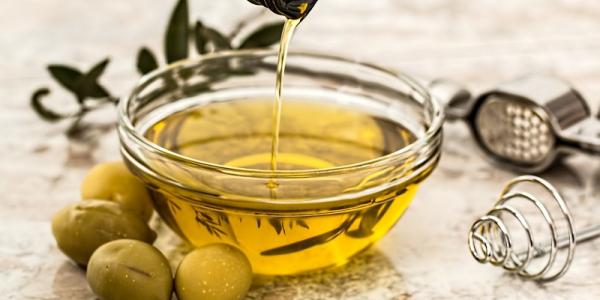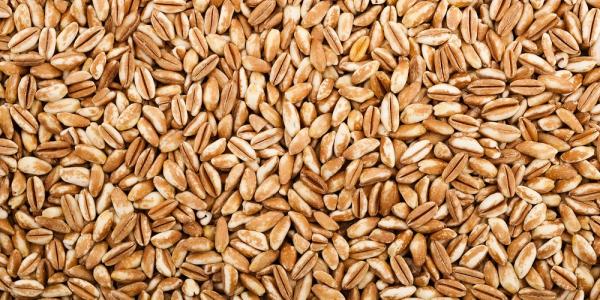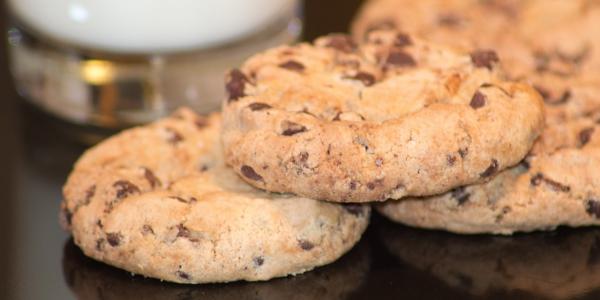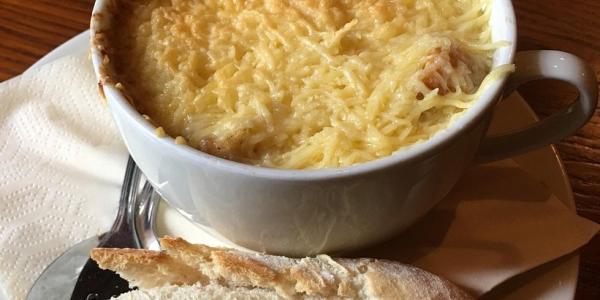Olive Oil Poached Chicken

Ingredients
- 1 lb. boneless, skinless chicken breasts
- Salt
- Pepper
- 3 c. delicately flavored olive oil
- 4 sprigs of rosemary
- 4 cloves of garlic, smashed
- 1 fennel bulb, thinly sliced
- 1 bay leaf
- 1 t. orange zest
Preparation
Pat chicken dry with paper towel, then season chicken on both sides with salt and pepper. Choose a heavy pan just wide enough for chicken to fit in a single layer without touching.
To the empty pan, add oil, rosemary, garlic, fennel, and bay leaf. Fit pan with a deep-fry thermometer. Heat oil to 180°F over medium-low heat. Reduce heat and monitor temperature, adjusting until temperature is stable at 180°F with small bubbles occasionally rising to surface. When temperature is stable, add chicken. Oil temperature will drop, so raise heat slightly (never above medium-low) just until it reaches 180°F again; then reduce heat. Cook chicken for about 15 minutes, or until internal temperature of chicken is 160°F. Remove to a plate lined with paper towels.
To make sauce, place fennel and garlic in blender along with about a cup of the olive oil. Blend until smooth. Stir in orange zest. Adjust seasoning with salt and pepper to taste. To serve, slice chicken and top with the sauce.
Filter remaining olive oil and save in refrigerator for another use.
Chef Kurt Kwiatkowski, MSU Culinary Services, adapted this recipe from Julia Moskin of the New York Times. He changed the protein to the ever-popular chicken to highlight this olive oil poaching technique. He finished the dish with fennel and orange zest. This recipe is perfect for a weeknight meal when time is limited.
Learn More About Olive Oil
Thanks to recent debunking of low fat recommendations, we can now eat olive oil and other fats without trepidation. Olive oil, at the heart of the Mediterranean diet, is high in monounsaturated fats. Yet olive oil does not have a lock on monounsaturated fats. Other oils such as canola and peanut are also very good sources. Olive oil’s uniqueness is that it is extracted from fruit while other oils come from dry grains and nuts. Olives are harvested when they are just beginning to turn from green to purple, the stage when they have reached their peak of fruitiness and have that highly valued green aroma.
Oil from the first cold pressing of the olives is the most delicate and stable. The green-gold color comes from fragments of fruit and leaves giving the oil not only color but also phytonutrients and flavor. This oil is labeled “extra virgin olive oil, first cold press.” More oil is extracted with additional pressings and may be labeled “extra virgin olive oil” or “virgin olive oil” depending on its free fatty acid content. Heat treating the remaining olive paste allows more oil to be extracted; this refined oil is labeled “pure” and is often blended with virgin oil to give it flavor.
When it comes to storage, the unrefined nature of virgin olive oils is both desirable and undesirable. Their stability comes from antioxidants that give them their beautiful color and flavor. Yet this same color makes them vulnerable to damage from light. Bottom line, store extra virgin olive oil in opaque containers away from sunlight and heat.
Reserve richly flavored extra virgin olive oil for making vinaigrettes and hummus, drizzling on vegetables, and dipping bread. For uses involving heat, you could use pure olive oil but the smoke point of olive oil is only 165 degrees. Depending on desired flavor, you could choose canola or peanut oil. They are less flavorful but tolerate more heat.
Featured Recipes

Rhubarb & Strawberry Crisp
Combine tart rhubarb with sweet strawberries, add a streusel topping, and bake until bubbly. Dessert doesn’t get easier—or more classic—than this. Serve warm with a scoop of vanilla ice cream. You’re sure to get rave reviews!

Farro Salad with Grilled Vegetables
Chewy farro grains are delicious in this autumn-y salad. Recipe yields enough for dinner for 2 to 4 with some left for a couple of lunches. To do this, make the base with dressing, farro, and grilled veggies. Add fresh veggies to the base as you go.

Pecan and Dark Chocolate Chip Cookies
Roasting amps up the flavor in everything including pecans. Chef Kurt's attention to detail takes a traditional chocolate chip cookie to another level of yum!

Onion Soup
Onions, the simplest of pantry staples, mingle with butter, broth, and herbs to become luxuriously smooth and delicious. Add "homemade" croutons and a blend of cheeses to make a complete and satisfying meal.





